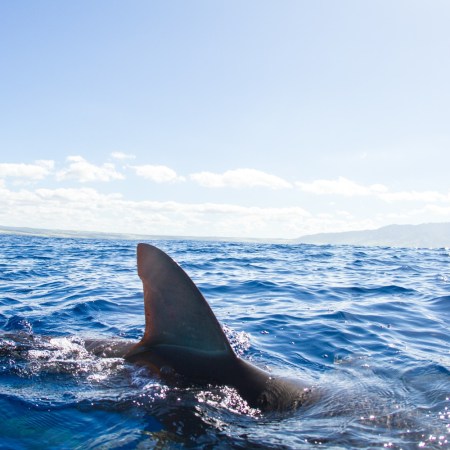At first glance, the sight of 14 great white sharks in an area where folks swim is a bit ominous.
But really, we should rejoice.
Prior to 1994, great whites were on the outs worldwide. It was that year that protections were put in place in California — a measure which would be repeated at the federal level in 2005 — to help replenish declining shark populations. Two decades later, those measures appear to be working: while sharks continue to face endangerment around the world, they’re bouncing back in Southern California, a great sign for our ecosystem and the positive effects of environmental regulations.
Sharks — and the marine mammals that they feed on — have thrived off the coast of California for decades with the help of government intervention (like the Clean Water and Air Act that was passed into law by President Richard Nixon in the ’70s). Thanks to its climate and location, the area represents a nursery for the entire northeastern Pacific: the sharks are born there before moving on to bigger waters.
“It’s rare to see adults along our shores,” says Dr. Chris Lowe, a professor of marine biology at UC Long Beach and director of the Shark Lab. “But the younger sharks come close to shore for protection from predators, like orcas. They’re afraid of everything.”
The area also provides a healthy surplus of food. “We’ve found lots of stingrays in their bellies — there are lots of ray populations along the coast because of fishery protections.”
So, should you be swimming in the water with them? Hate to break it to you, but if you’ve been swimming in the waters around L.A. for the past 10 years, you already have been.
“I find it remarkable: we’ve observed 14 baby great whites swimming from Hermosa to Santa Monica in one sighting,” says Lowe. “That’s the most populated beach along the coast, and they come in as close as this side of the surf break, and yet nothing happened.” Normally, the young sharks migrate away after the winter, but the wonky weather systems of the past few years have affected their migration patterns.
These sharks fulfill a vital role in the ecosystem.
“We need the sharks, the natural apex predator, to keep the seal and sea lion populations in check much as we need wolves and mountain lions to keep the deer populations in check,” explains Lowe. “Otherwise, these sea mammals will end up dead on our beaches and depleting our fisheries, which have finally recovered.”
“It’s taken four decades for our coast to recover from overfishing and pollution,” he continues. “Now we have five times more people and a much larger economy … If we loosen those restrictions, how quickly will it go backwards?”
Probably about as quickly as a pack of surfers heading for the beach after seeing 14 sharks underfoot, would be our guess.
This article was featured in the InsideHook LA newsletter. Sign up now for more from the Southland.






















